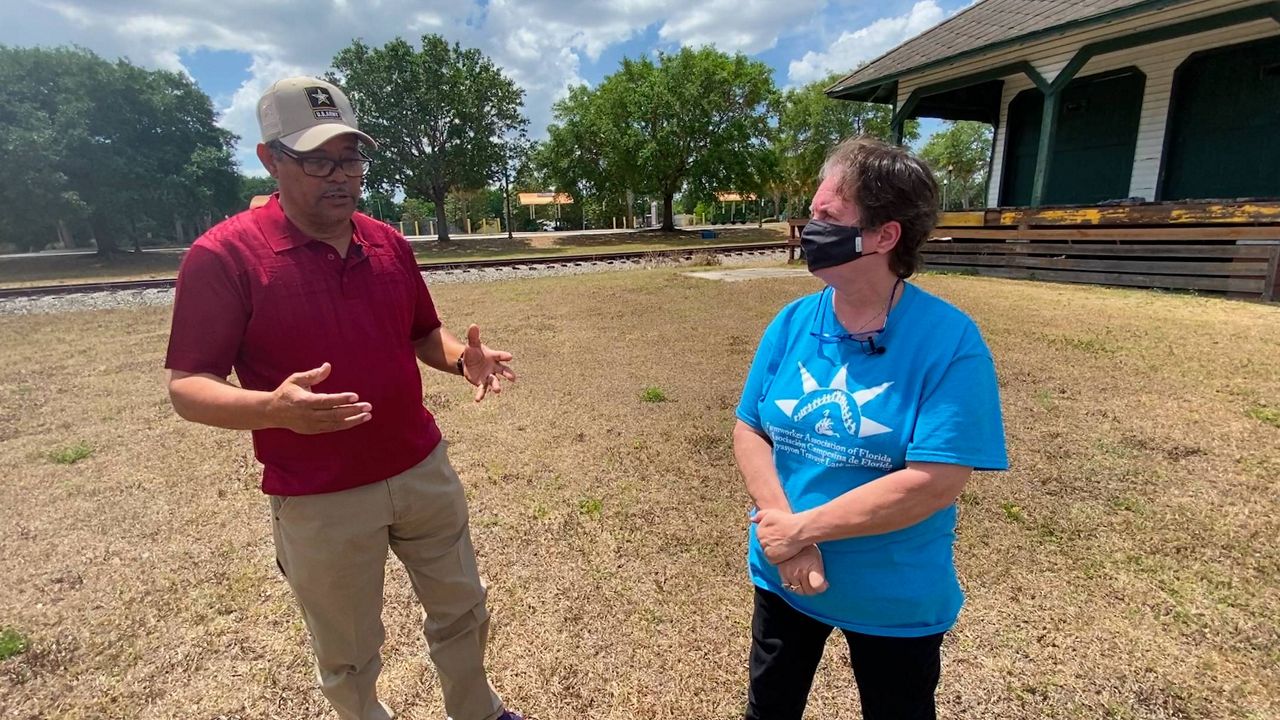ORLANDO, Fla. — Homeowners and community leaders in Northwest Orange County have once again reignited a discussion that’s been debated for several decades — annexing South Apopka.
The designated census area used to be part of the City of Apopka until segregation took hold during the 1930s. It lifted by the 1970s, but some say South Apopka is still suffering the effects of segregation today.
Leroy Bell and Phyllis Olmstead are working to change that. While family through marriage, they say during the time of segregation, they wouldn’t have been allowed to meet up on the same side of the train tracks.
“In 1968 and 1969, we knew not to be caught on the other side of the track. We knew to be on this side,” said Bell.

Though much has changed, Bell still clearly remembers the community’s cruel, unforgiving rules of segregation.
“There used to be a restaurant on Park Avenue, and it used to have in front of the window, ‘no blacks allowed,’” he said.
Olmstead spent many years teaching home healthcare, while visiting homes, and said many had poor living conditions.
“One had a man’s underwear stuck in the empty doorknob hole,” said Olmstead.
Today, those neglected neighborhoods are still trying to survive. Sometimes the situation is compounded with choices made by elected officials. She said a mountain of trash overshadows one neighborhood in South Apopka.
“This backs right up to people’s homes, as you can see,” said Olmstead.
County and city leaders allowed the landfill to go in years ago in the predominantly African-American community.
“They didn’t deserve this, and it’s history, but it’s also the present. It has become the present, and people are sick and suffering from it,” said Olmstead.
That’s why she and other community leaders are fighting for better representation in local government by urging the City of Apopka to right what she calls a wrong, and help people in South Apopka experience a better quality of life.
She wrote a book that documents the city’s divided past, in hopes it will lead to a unified future.
“It’s vital for people to know that these hard-working people existed,” said Olmstead. “And people worked together. To begin with, this was one entire community where everyone lived together. Blacks and whites lived side-by-side. They were commingled, and it wasn’t until Jim Crow law was enacted were the Blacks and whites separated across that railroad track.”
Olmstead says the future of South Apopka residents won’t change unless Apopka’s dividing line is erased and South Apopka is annexed in.
“That invisible line is actually a wall. It’s a wall,” said Olmstead.
Apopka city leaders have held several discussions and workshops with residents about the possibility of annexing South Apopka, but so far it’s unclear whether the matter will be put on a ballot for voters to decide.


